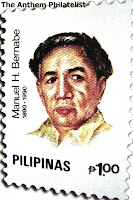The road to Kathmandu- a road less travelled
 I love traveling to exotic places, and for someone from Southeast Asia, Nepal definitely fits the bill. As a young boy, I was fascinated by this mountainous, landlocked kingdom with a weird-shaped flag, and dreamt that someday I'll be able to visit the place- my dream came true. I pity that Nepal is unable to take off in tourism. They surely can be great tourist destination if the government will only strengthen their efforts by improving infrastructure and lessening corruption. There is only the Department of Roads in Nepal because there are only roads-- no highways exist. The Nepalese are a beautiful and friendly people. My hope is for their Tourism Year 2011 to be a success.
I love traveling to exotic places, and for someone from Southeast Asia, Nepal definitely fits the bill. As a young boy, I was fascinated by this mountainous, landlocked kingdom with a weird-shaped flag, and dreamt that someday I'll be able to visit the place- my dream came true. I pity that Nepal is unable to take off in tourism. They surely can be great tourist destination if the government will only strengthen their efforts by improving infrastructure and lessening corruption. There is only the Department of Roads in Nepal because there are only roads-- no highways exist. The Nepalese are a beautiful and friendly people. My hope is for their Tourism Year 2011 to be a success.Nepal, officially the Federal Democratic Republic of Nepal, is a country in South Asia
 located in the Himalayas and bordered to the north by the People's Republic of China, and to the south, east, and west by the Republic of India. With an area of 147,181 square kilometres (56,827 sq mi) and a population of approximately 30 million, Nepal is the world's 93rd largest country by land mass and the 41st most populous country. Kathmandu is the nation's capital and the country's largest metropolis. Nepal has a rich geography. The mountainous north has eight of the world's ten tallest mountains, including the highest point on Earth, Mount Everest, called Sagarmatha in Nepali. It contains more than 240 peaks over 20,000 ft (6,096 m) above sea level. The fertile and humid south is heavily urbanized.
located in the Himalayas and bordered to the north by the People's Republic of China, and to the south, east, and west by the Republic of India. With an area of 147,181 square kilometres (56,827 sq mi) and a population of approximately 30 million, Nepal is the world's 93rd largest country by land mass and the 41st most populous country. Kathmandu is the nation's capital and the country's largest metropolis. Nepal has a rich geography. The mountainous north has eight of the world's ten tallest mountains, including the highest point on Earth, Mount Everest, called Sagarmatha in Nepali. It contains more than 240 peaks over 20,000 ft (6,096 m) above sea level. The fertile and humid south is heavily urbanized.By some measures, Hinduism is practised by a larger majority of people in Nepal than in any other nation.
 Buddhism, though a minority faith in the country, is linked historically with Nepal. Many Nepali do not distinguish between Hinduism and Buddhism and follow both religious traditions. There are 3 different buddhist traditions: Himalayan Buddhism, Buddhism of Kathmandu Valley (mostly Mahayana and Vajrayana), and also the Theravada Buddhism. Their type of Buddhism is similar to the Sri Lankan Buddhism.
Buddhism, though a minority faith in the country, is linked historically with Nepal. Many Nepali do not distinguish between Hinduism and Buddhism and follow both religious traditions. There are 3 different buddhist traditions: Himalayan Buddhism, Buddhism of Kathmandu Valley (mostly Mahayana and Vajrayana), and also the Theravada Buddhism. Their type of Buddhism is similar to the Sri Lankan Buddhism.A monarchy throughout most of its history, Nepal was ruled by the Shah dynasty of kings from 1768, when Prithvi Narayan Shah unified its many small kin
 gdoms. In 2006, however, a decade-long Civil War by the Communist Party of Nepal (Maoist) along with several weeks of mass protests by all major political parties of Nepal culminated in a peace accord, and the ensuing elections for the constituent assembly voted overwhelmingly in favor of the abdication of the last Nepali monarch Gyanendra Shah and the establishment of a federal democratic republic in 28 May 2008. The first President of Nepal, Ram Baran Yadav, was sworn in on 23 July 2008.
gdoms. In 2006, however, a decade-long Civil War by the Communist Party of Nepal (Maoist) along with several weeks of mass protests by all major political parties of Nepal culminated in a peace accord, and the ensuing elections for the constituent assembly voted overwhelmingly in favor of the abdication of the last Nepali monarch Gyanendra Shah and the establishment of a federal democratic republic in 28 May 2008. The first President of Nepal, Ram Baran Yadav, was sworn in on 23 July 2008.On 1 June 2001, there was a massacre in the royal palace. King Birendra, Queen Aiswarya, Crown Prince Dipendra and seven other members of the royal family were killed. Dipendra was accused of patricide and of committing suicide thereafter. This outburst was alleged to have been Dipendra's response to his parents' refusal to accept his choice of wife. Nevertheless there are speculation and doubts among Nepalese citizens about who was responsible.






